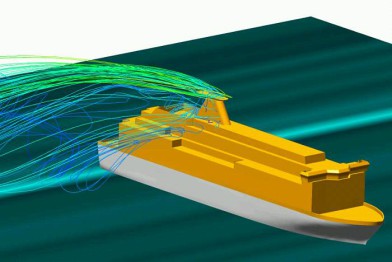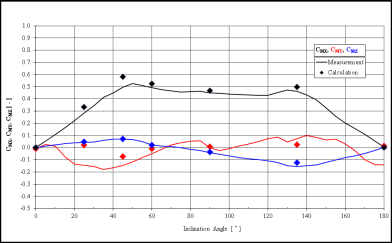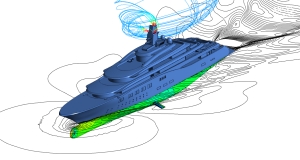Along with resistance and stability considerations resulting from wind loads, the focus of aerodynamic investigations of the hull above water is also on the problems of exhaust and intake from ventilation and air conditioning systems and the analysis of exhaust gas concentrations. The latter applies primarily to yachts and passenger ships, where comfort aspects are an important design criterion.
Due to the complex geometry of superstructures or masts, turbulence and recirculation zones can arise which can be examined in terms of gas distribution. To process such inquiries, numerical methods can offer possible solutions in order to verify structural aspects and to carry out calculations on variants.
Through simulation the following aspects may be considered:
- Calculation of wind, exhaust gas, intake and exhaust flow, and detection of mutual interactions
- Detailed visualisation of the flow and fluid concentrations, i.e. the exhaust gas
- Calculation of the flow around the whole ship (not linked to specific measurement positions)
- Temperature distribution for the detection of “hotspots”
- Accounting for the wind profile
- Calculation for full-scale version
Context Related References / Research Projects
[1] Blendermann, W., Hellwig-Rieck, K., Schuckert, E.: Wind Loads on a Passenger/Car Ferry by CFD Computations and Wind Tunnel Tests, Ship Technology Research, Vol. 58, No. 2 (2011)


